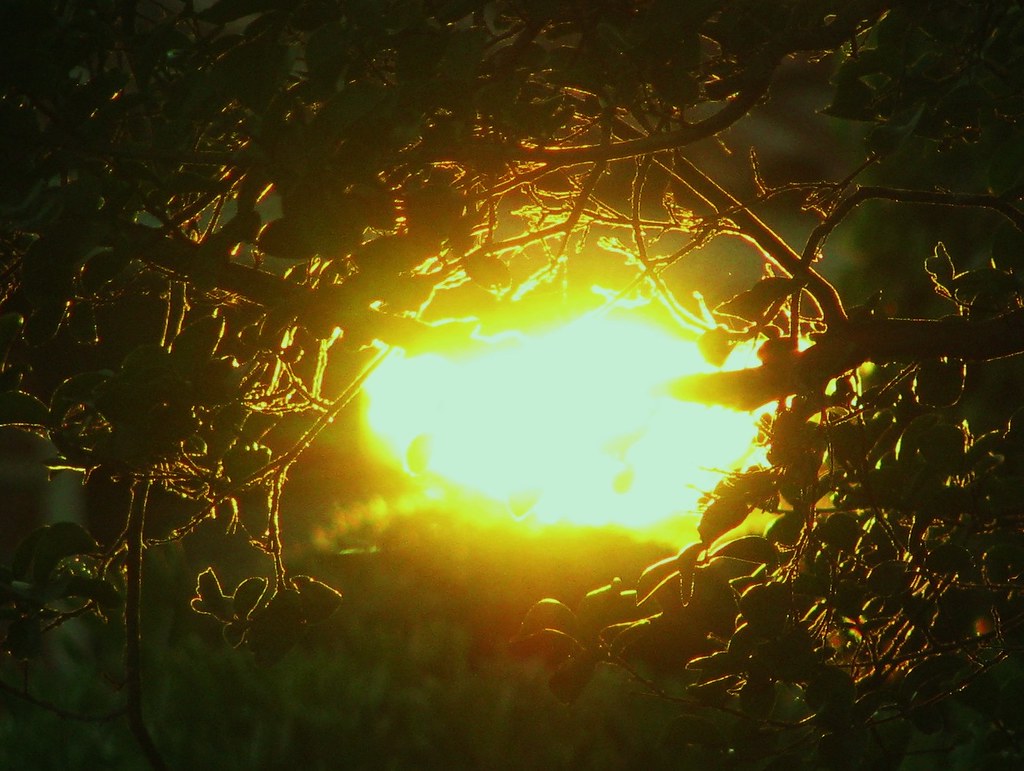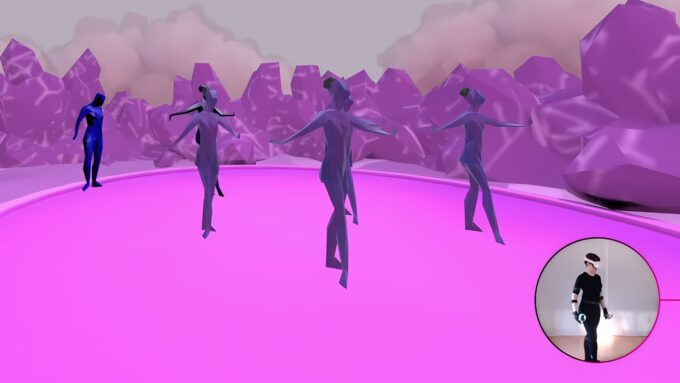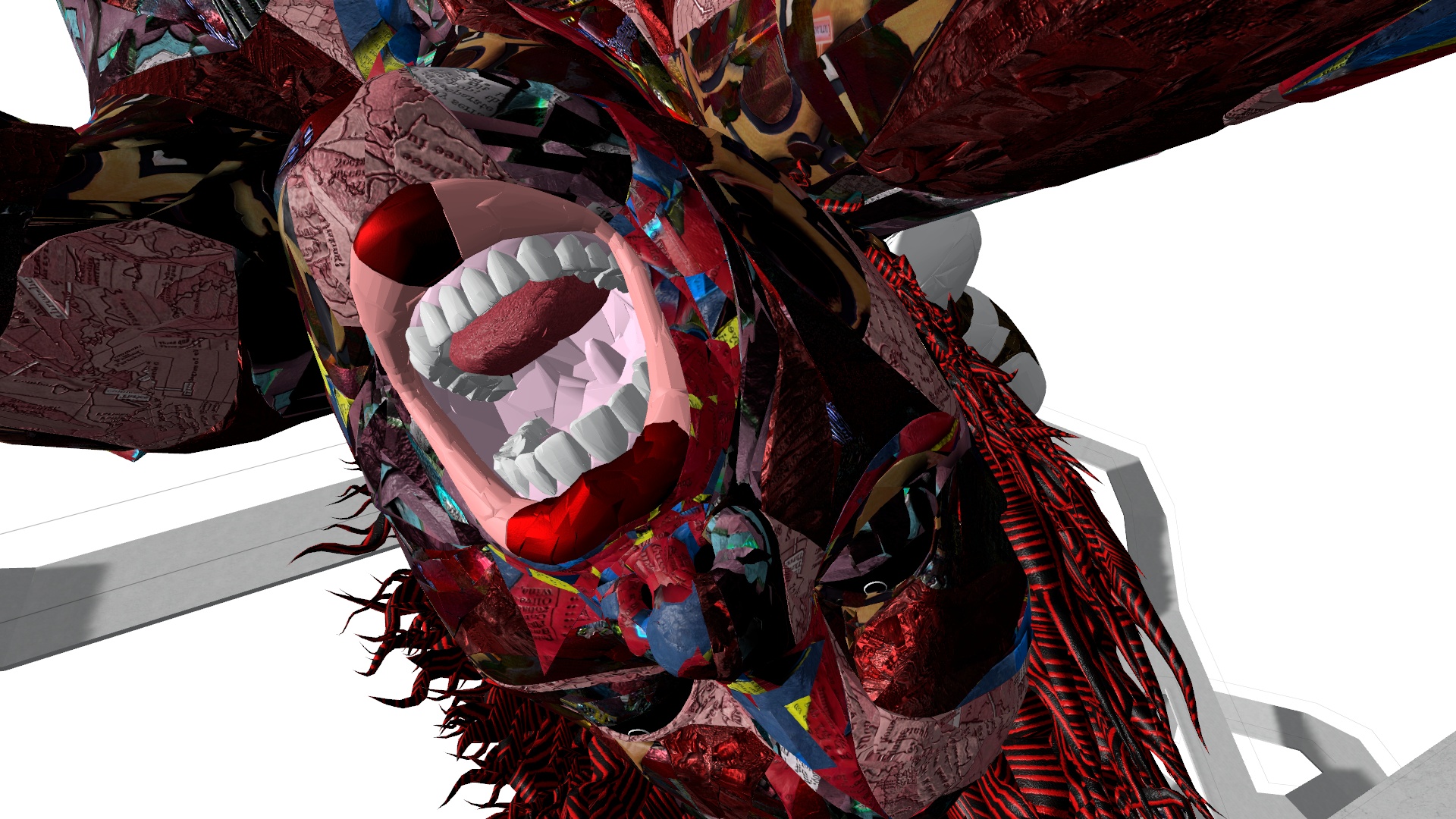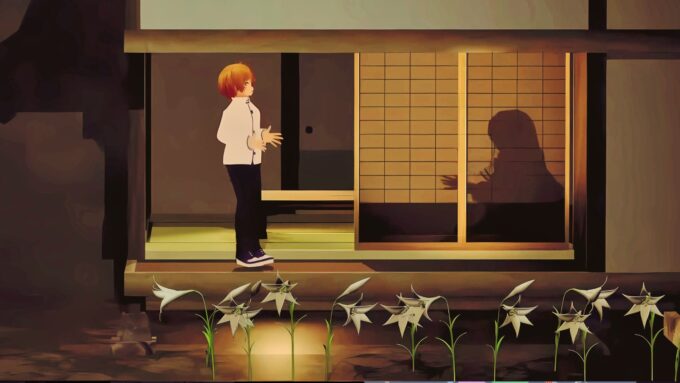In A Conversation with the Sun (VR), Thai filmmaker Apichatpong Weerasethakul extends his distinctive cinematic language into the domain of virtual reality. Combining video projection and an immersive VR experience, the piece premiered at Aichi Triennale in Nagoya Japan in October 2022 and was curated by Soma Chiaki, director of the Triennale’s performing arts program as well as Theater Commons Tokyo. Soma has been a major contributor to VR theatre internationally since producing Prometheus Bound by Koizumi Meiro in 2019/2020 at Theater Commons Tokyo.
While Weerasethakul oversaw the artistic direction of A Conversation with the Sun (VR), there was also major input from a host of other collaborators, including Taniguchi Katsuya, a VR creator from Rhino Studios, the company that also worked on Koizumi’s VR pieces. Moreover, the late Ryuichi Sakamoto composed core parts of the performance soundtrack, integrating field recorded sound that Weerasethakul had recorded himself in Peruvian Amazonia.
The performance was staged in the Large Rehearsal Room beneath the Aichi Prefectural Art Theater, where the audience was split into two groups. Participants in the first group were given VR headsets to wear, while members of the second group viewed video sequences projected on a large, suspended, double-sided screen, which bisected the space. The rehearsal room floor was covered in patterned carpet with interwoven white lines. After about thirty minutes, the first group put down the headsets and the second group took them up.
The video sequence was constructed using Weerasethakul’s signature technique: a vertical-wipe slideshow of cinematic stills. Each side of the suspended screen showed an array of footage from Weerasethakul’s archives, including a man lying on granite in a cave; the character Jen from the film Uncle Boonmee Who Can Recall His Past Lives folding linen on a back porch; a guitarist playing in a public park; a woman asleep or possibly deceased in bed, and so on. These were accompanied by a bass-heavy soundtrack, interspersed with melodic sequences, and ambient sounds.
The VR component of the performance brought participants into an immersive memory-world, in which the same audio and images momentarily overlapped from the film projections, except that the images took the form of floating fragments, dislodged from the film’s chronology and context.
Audience members in the space appeared to the headset wearers as small white dots, slowly moving around the rehearsal room. This innovative live audience mapping function helped avoid potential collisions among VR users, but also transformed human participants into digital objects within the networked space. This shift is important, because it meant that audiences were not merely observers in a virtual “museum,” but were active objects inside its narrative. At key points in the VR experience, clusters of dots would form, signalling a potential site of interest/attraction to other users in the VR world. As a result, the white dot avatars produced a proto-field of communication in which users reacted like swarms to stimuli in the environment. For a moment, language was no longer the main medium for accessing reality.
The patterned floor that I mentioned earlier also appeared in the virtual world (initially) as a means of orienting audiences in the dark. It also enabled the headset cameras to track the space properly (cf. Kwon Sanghae’s excellent project report on the creation process). This design choice of carrying parts of the non-digital space into the VR space was part of the “on-boarding” process of familiarizing audiences with spatial boundaries and general functionality in VR. At the same time, it brought one of the performance’s central questions into view: does memory survive through representation or it is always already slipping away?
Rather than staging the transition from video space to VR space as a sensory rupture, Weerasethakul presented it as an unfolding of memory’s persistence across media, which exist within different spatial and temporal topographies. Like a broken mirror, memory is shard-like. Its residues cling to shards with different surfaces, materials, and capacities, and these communicate (or not) from within different space-time coordinates. For example, I observed a woman folding clothes on the back porch of a house in Thailand in Weerasethakul’s film footage. That memory was formed in the interplay between the space-time of film and that of the large rehearsal room. Residue from that memory was brought into the VR world, since I saw that image again, but now broken into digital “pieces.” As such the coordinates of the residues of memory are caught in different space-time relationships, on different surfaces. Weerasethakul’s performance staged the shard-like nature of memory, rendering its fallibility bear for us to see.
Central to the VR component was the figure of the Sun. However, the titular “conversation” with the Sun never materialized in any conventional sense of that term. The Sun operated more as a structuring force than a subject, appearing first as a small orb of light to VR users, then gradually expanding in size and intensity, until it filled the entire virtual world. This produced a moment of swarm-like communication among avatars, who were drawn towards the powerful orb like moths to a street light. This shared gesture of attraction ended with a blackout.
One way of thinking about the notion of conversation in this performance is in the way the Sun was used in juxtaposition to darkness: light-dark; presence-absence; revelation-disappearance; intensity-silence and so on. In this sense the conversation worked more like a platonic dialogue, where contrasting binaries serve as starting points for inquiry rather than fixed positions. I would argue that the same dialectical movement was at work in all aspects of the performance, most noticeably in the split space (video/VR), split viewing modality (external/internal viewership), split materiality (2D documentary realism/3D synthetic graphics), and split caverns (the dark rehearsal room as cave/the VR cave).
The VR cave I just mentioned appeared after the disappearance of the Sun. Rocky surfaces emerged from the darkness, as did insect-like wisps of light. As users moved deeper into the cave, they encountered a large phallic statue—possibly inspired by Peru’s ancient Moche statues, known for their depictions of erotic scenes. The figure is perhaps a reminder of the cave as a space of revelation, the earliest “gallery” that we know of in human existence; but also perhaps a reminder of the “phallologocentrism” at work in the creation of new worlds; privileging the masculine and the symbolic role of the phallus in constructing meaning, particularly within language and social structures. In this sense the large penis wielding statue can be seen as a critique of Silicon Valley “tech bro” culture; notably the type that saw Facebook, Apple, Google, and other developers and investors jump into the “metaverse” in search of capitalism 2.0 during the global pandemic.
The cave In A Conversation with the Sun (VR) also engages with Plato’s question of the limits of knowing; of how we know what we know. The final sequence of the VR experience simulated a vertical ascent, in which the audience was lifted slowly through a transitional, formless space, reminiscent of rising from the ocean floor or emerging from the depths of unconsciousness. Yet no endpoint was reached. This failure to “arrive” underscored a core theme in the entire performance: the use of technology to achieve clarity and/or transcendence is often a process of deferral. We may see farther, move faster, learn quicker, but does this enable us to defeat illusion or transcend our finitude into a state of higher awareness? Or do we merely pass from one mediated space into another?
The final re-entry into the Aichi Arts Center’s polished institutional corridors did not feel like an awakening, but just back to business as usual. Perhaps the truly transcendental nature of A Conversation with the Sun (VR) lies in its simultaneous invocation of the sacred and the profane. Its dialectical flow carries us through memories, associations, and concepts that seem to transcend the cave’s shadowy limits. Yet when we are returned, suddenly, to the mundane corridors of daily life, we are interpellated—positioned as subjects within the spectacle of digital culture—and reminded, with a jolt, of how our attention has become a commodity.
Cover photo: “Sun In the trees” by Daniel R. Blume (License: CC BY SA 2.0)




